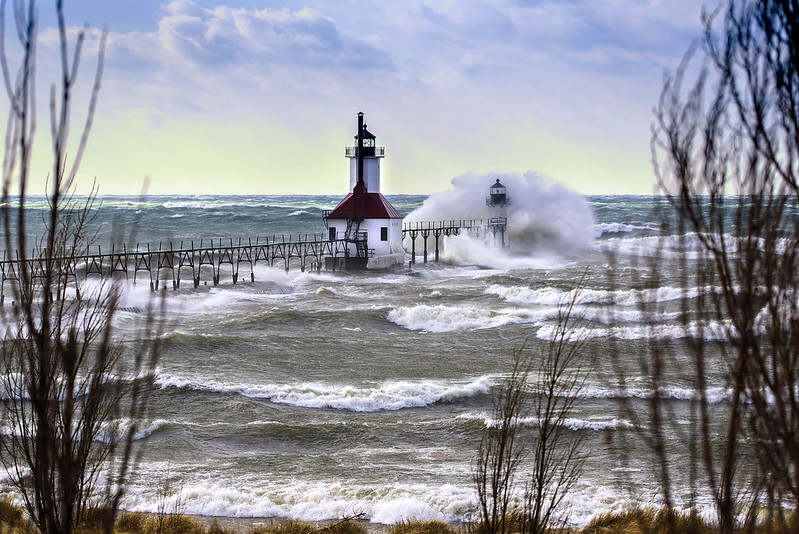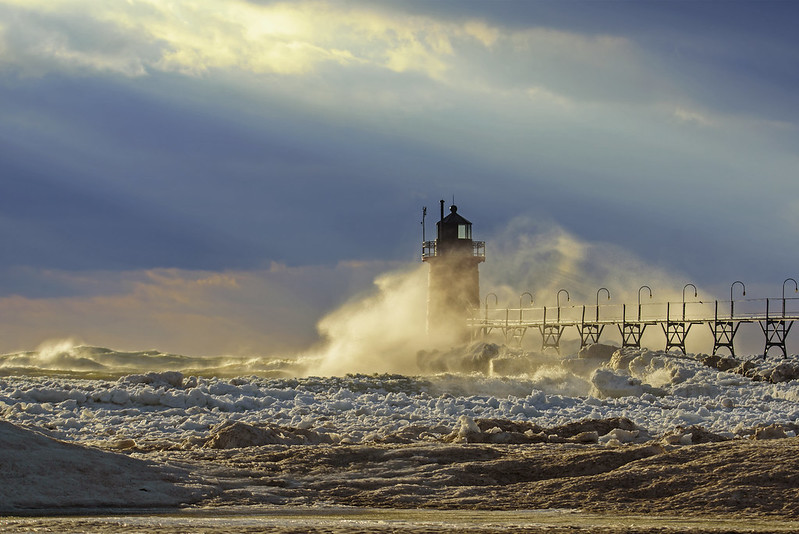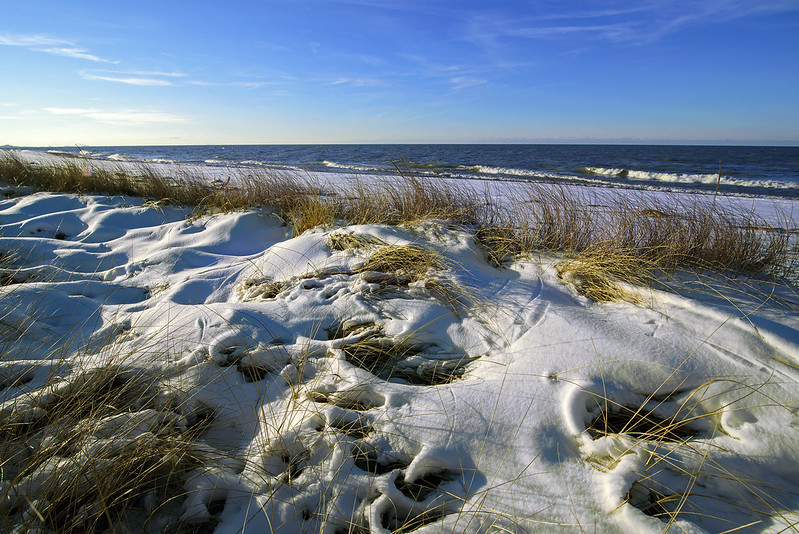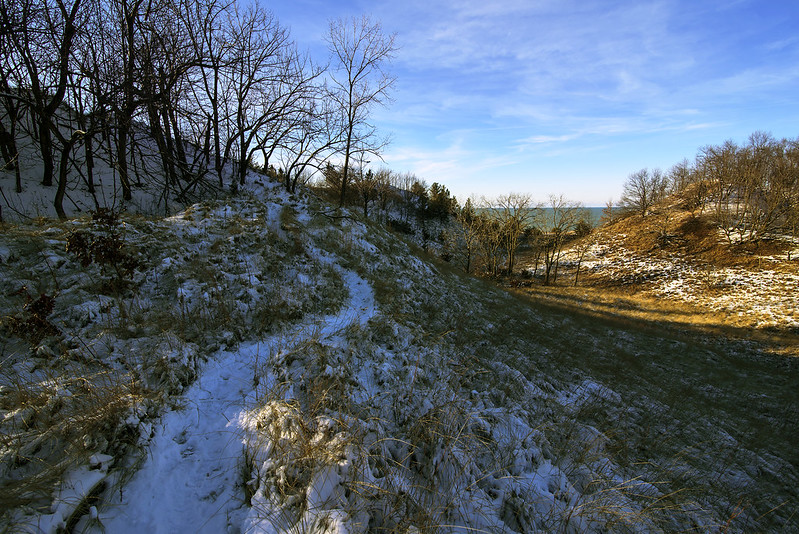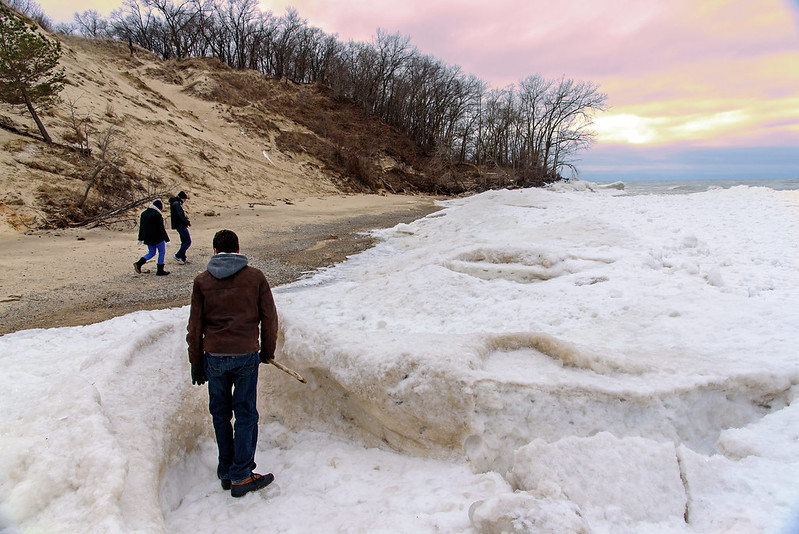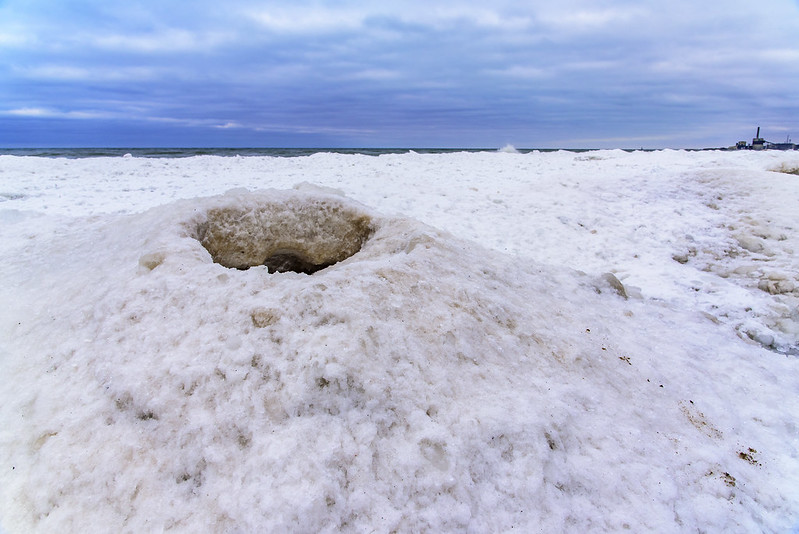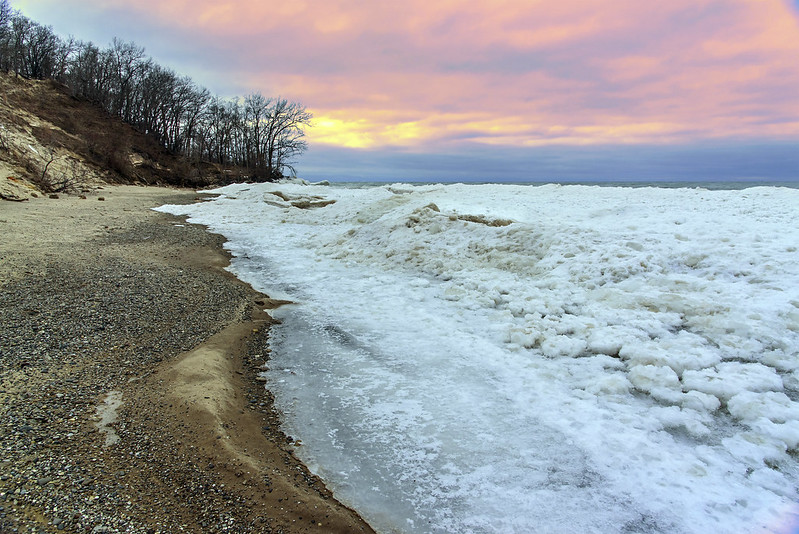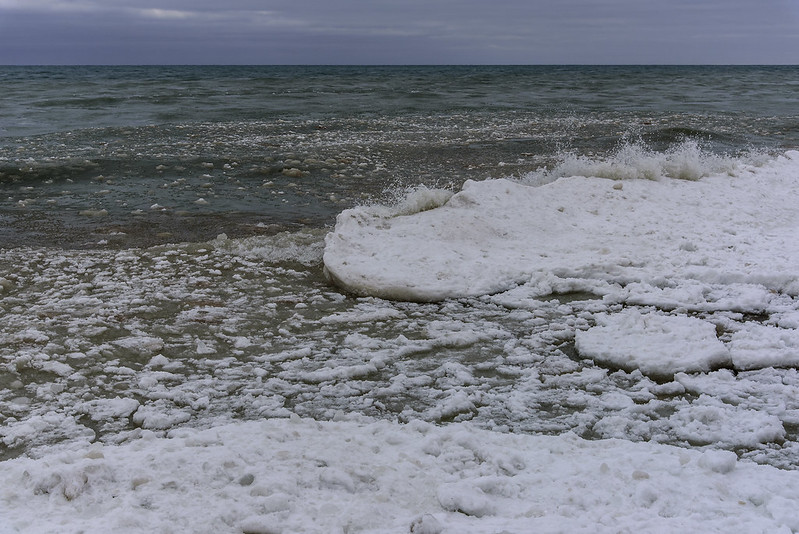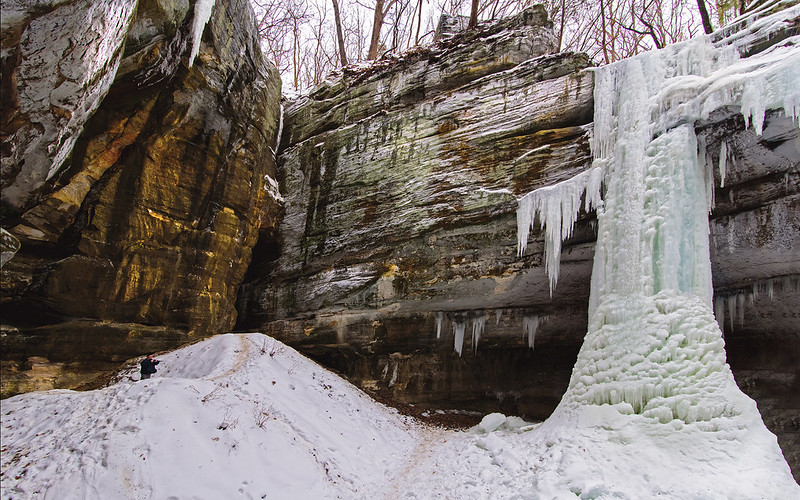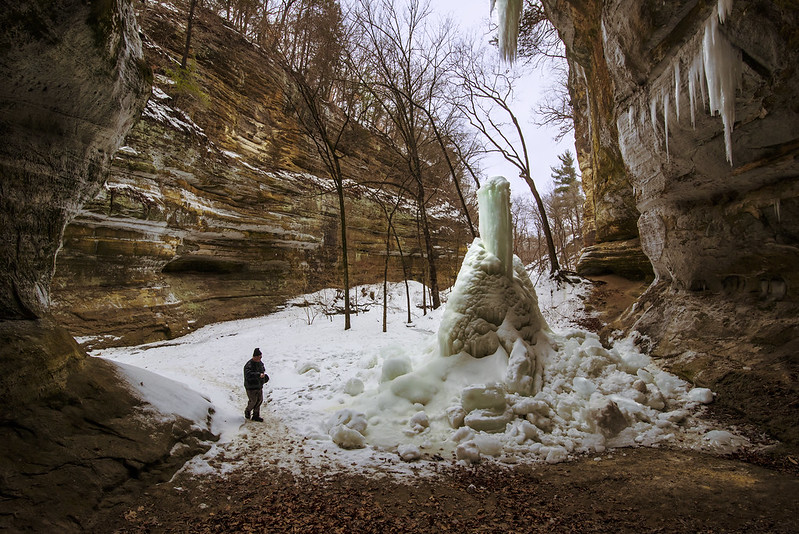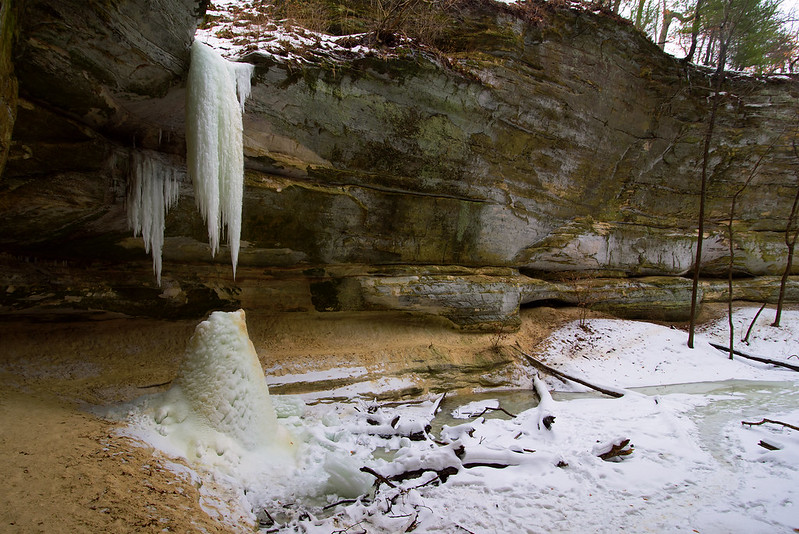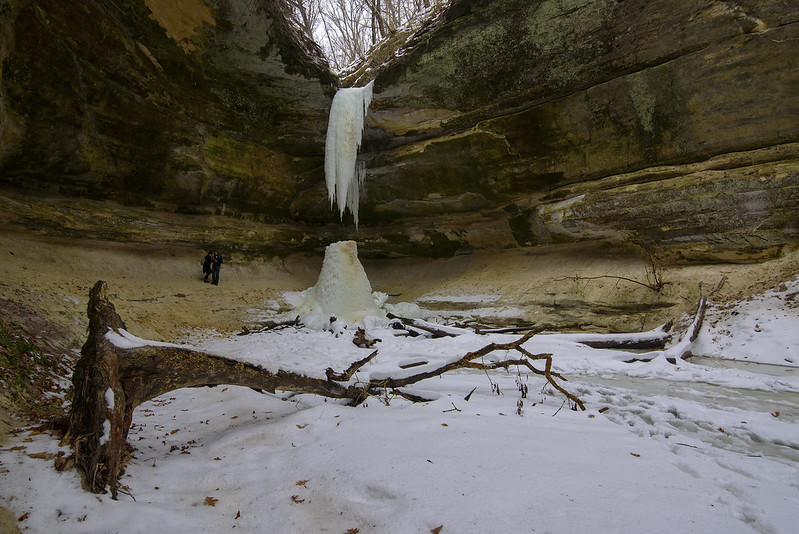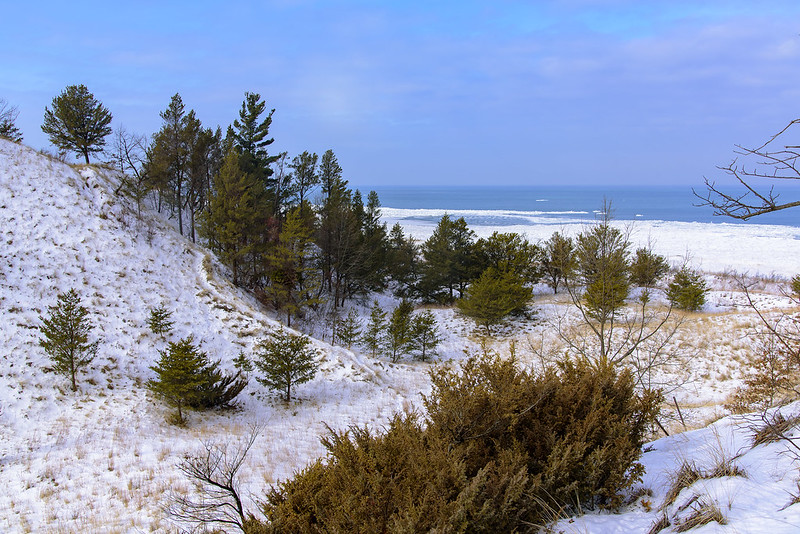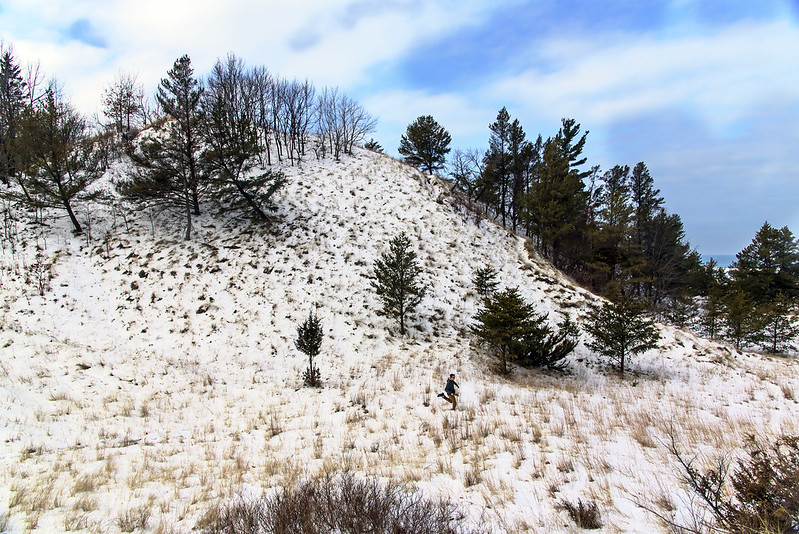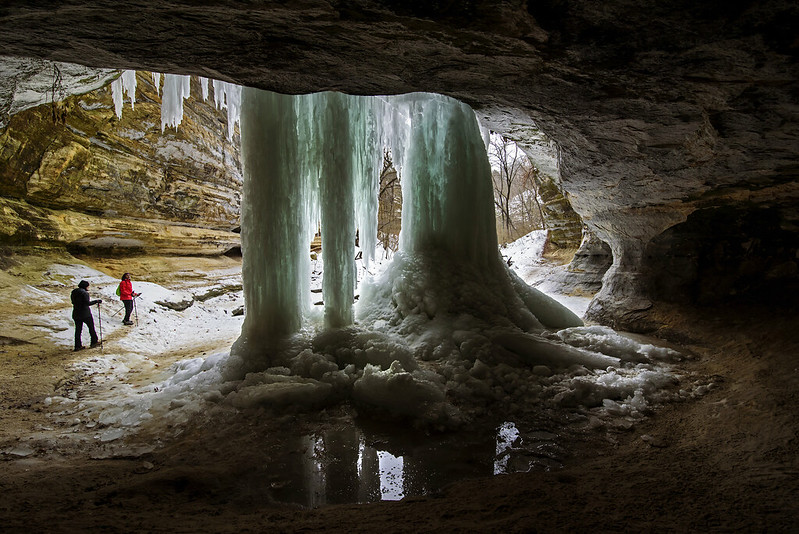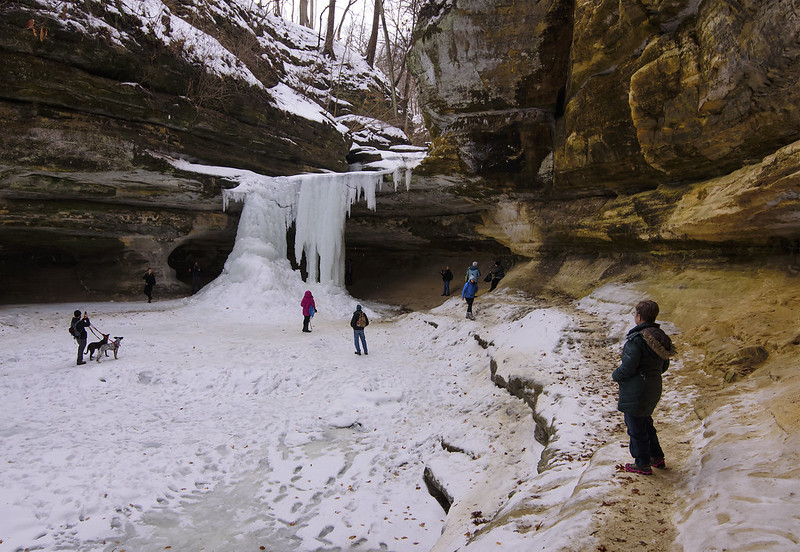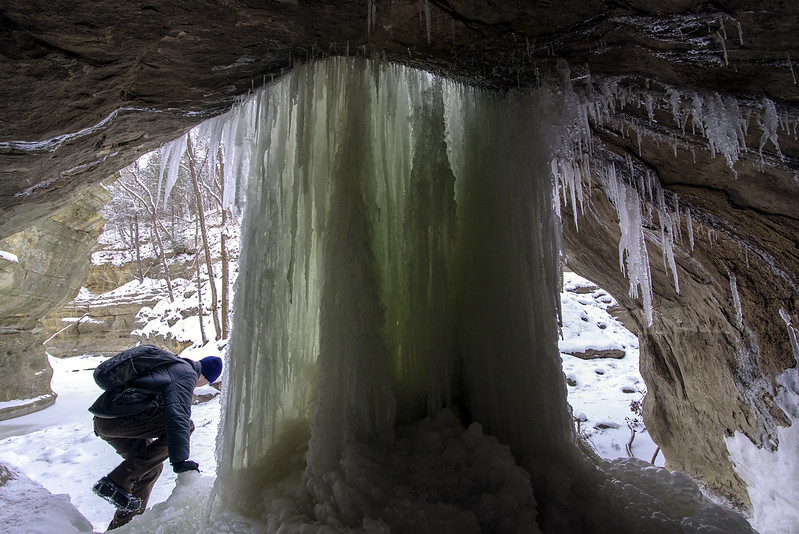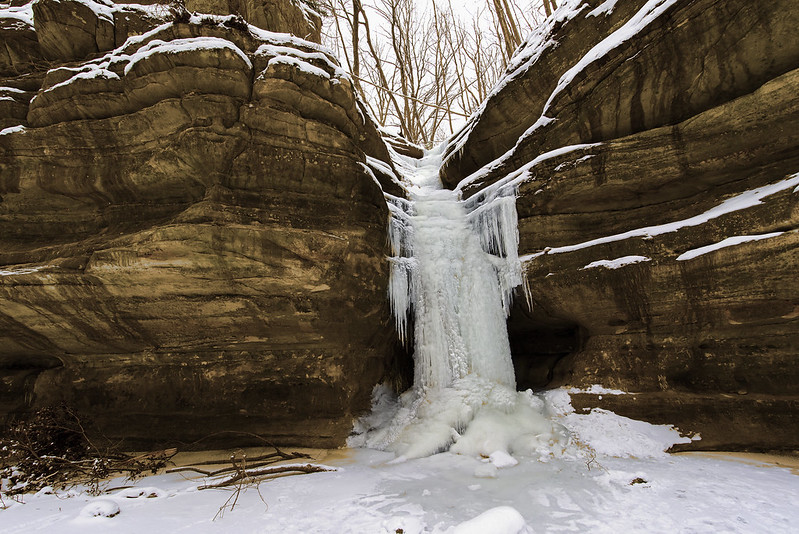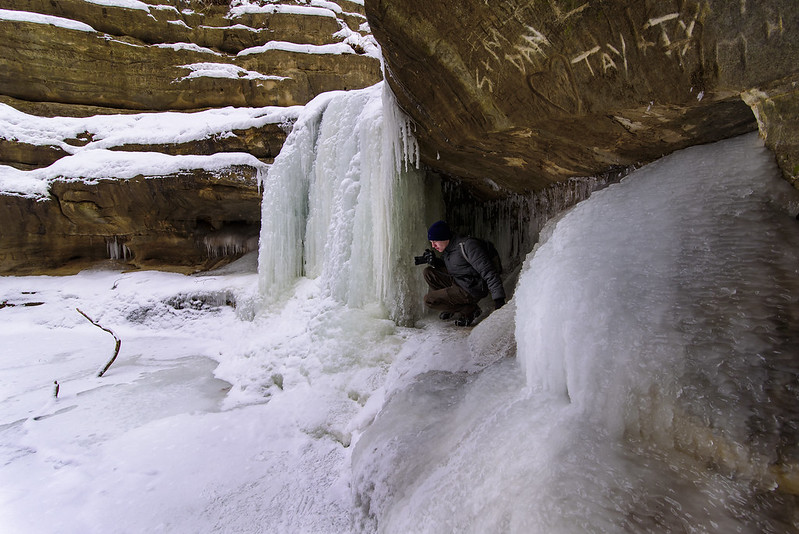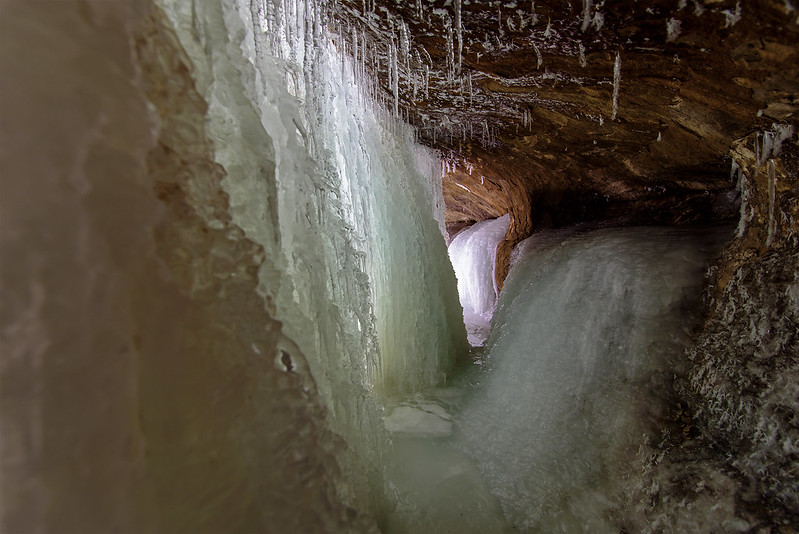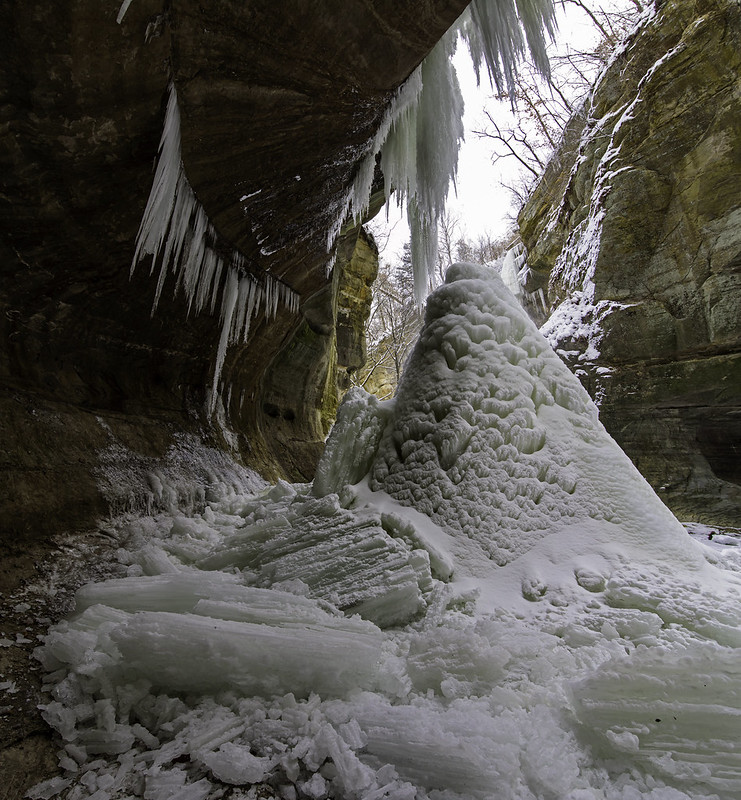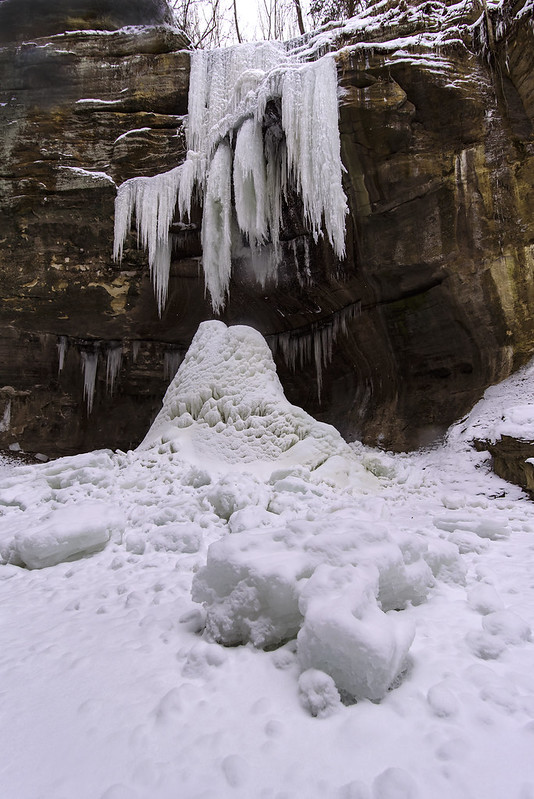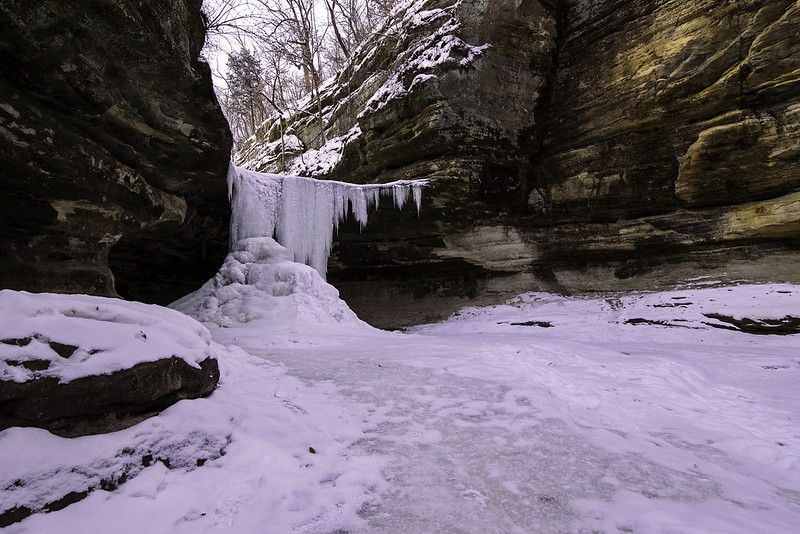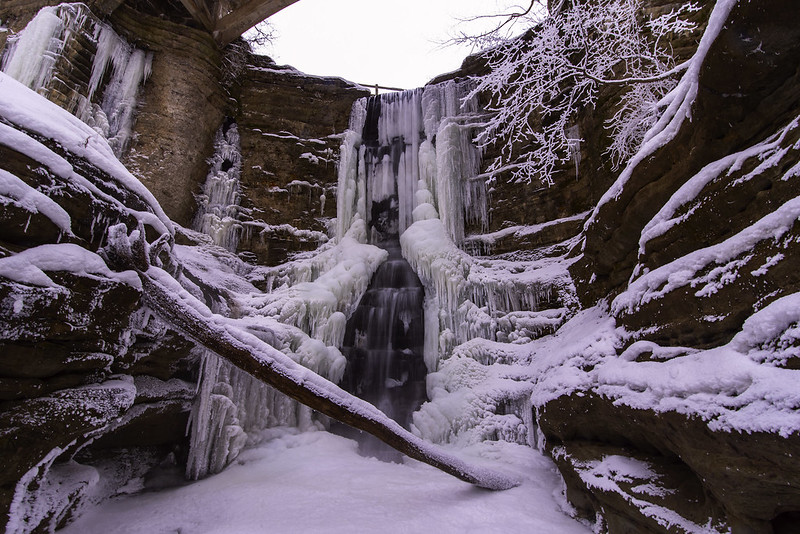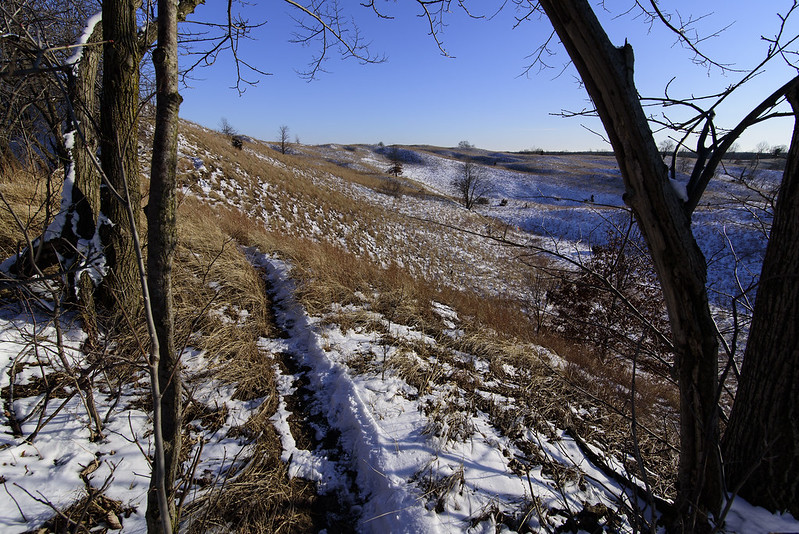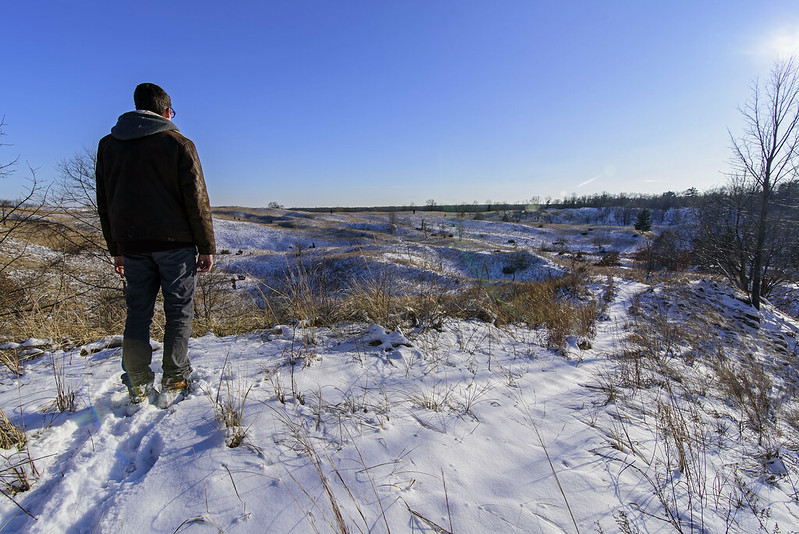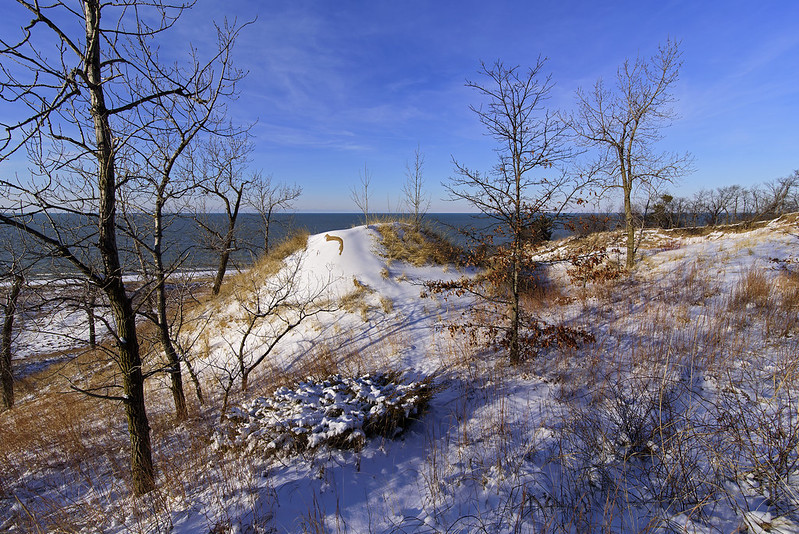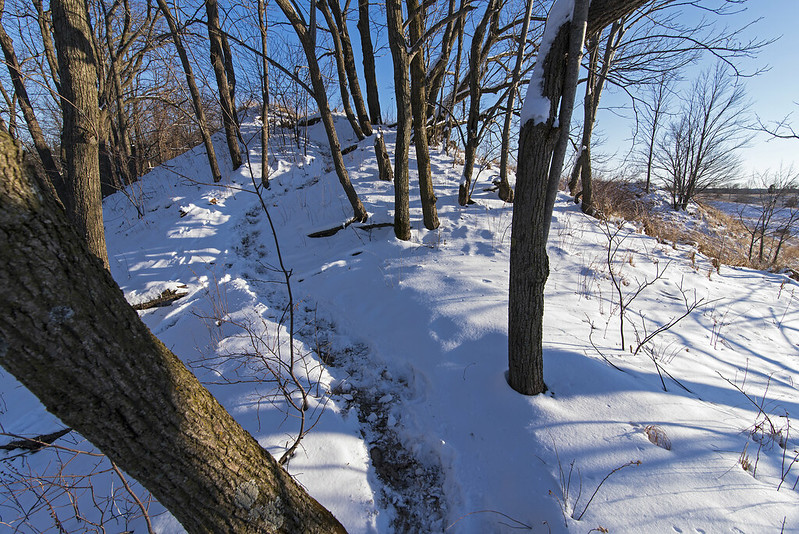
A 60 degree difference between last Wednesday and this Sunday allowed us to explore more of Starved Rock State Park's frozen waterfalls. Low temperatures of -24 F helped freeze the waterfalls solid in just a few days. Today's temperatures in the 40s began the melting process, but the cool canyons still retained most of their ice.
An unusual sight for me was the white frost on the walls of Tonti Canyon. I think it is due to the very cold temperatures a few days ago, then the warm temps yesterday and today. The warm air condensed on the cold canyon walls, and created frost. It certainly gave the canyons another layer of contrast.

In just a week's time, the main waterfall in Tonti Canyon completely froze from top to bottom. Take a look at
this post to see what the waterfall looked like last week. I'd estimate the height of the waterfall at around 60 feet, and if the cold comes back soon, this icefall will continue to build in thickness and perhaps allow ice climbers a chance at tackling the difficult climb to the top.
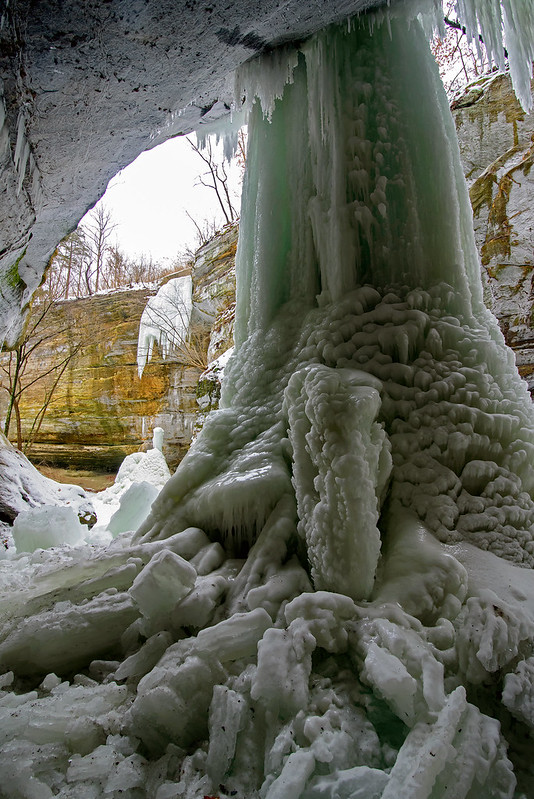
While being careful of the hanging icicles above, we wandered behind the icefall for a view of the backside. Unlike the thinner ice columns of LaSalle Canyon, this ice isn't as transparent, but it does offer a look at the beautiful details and patterns in the ice.
Looking closely to the left of the ice column, you can spot the second icefall of Tonti, a bit smaller, and not yet connected from top to bottom.
The Tonti Canyon bridge has been closed for quite some time, forcing visitors to take a 15 minute detour back through LaSalle Canyon. It's never a bad thing to visit this canyon twice in an afternoon, but the longer hike takes some time away from exploring other canyons along the way. I'm not sure what the State is waiting for - the bridge can be repaired for very little money, and very little time. Unless the bridge isn't the problem, perhaps it's the trail itself which seems a bit narrow just before the bridge. Either way, it's time something is done to improve a beautiful trail in Illinois' second largest attraction.
 Recent high winds created plenty of drama on Lake Michigan last weekend. Large splashes could be seen from far away, as the waves crashed into the end of the pier, engulfing the outer lighthouse in a shroud of water. While I've witnessed much larger splashes against this lighthouse over the years, this day was one of the windiest I've experienced on Lake Michigan. Only two other days I've seen would rival the winds on this day.
Recent high winds created plenty of drama on Lake Michigan last weekend. Large splashes could be seen from far away, as the waves crashed into the end of the pier, engulfing the outer lighthouse in a shroud of water. While I've witnessed much larger splashes against this lighthouse over the years, this day was one of the windiest I've experienced on Lake Michigan. Only two other days I've seen would rival the winds on this day.  The gale blew most of the night, into the next day, churning up Lake Michigan with waves reported as high as 20 feet. This pushes the water toward the shore, and when it's this high, it pushes the water up the river, and over the pier. This relentless action has eroded the sand next to the pier, exposing utility conduits, and undercutting the concrete walkway. The couple of hours I spent on the shore were spent constantly wiping the water droplets from the camera lens - even when quite far away from the water. The rest of the night was spent cleaning sand from everything, including inside my ears. I'm sure I'll continue to find sand in every piece of gear for the next few weeks.
The gale blew most of the night, into the next day, churning up Lake Michigan with waves reported as high as 20 feet. This pushes the water toward the shore, and when it's this high, it pushes the water up the river, and over the pier. This relentless action has eroded the sand next to the pier, exposing utility conduits, and undercutting the concrete walkway. The couple of hours I spent on the shore were spent constantly wiping the water droplets from the camera lens - even when quite far away from the water. The rest of the night was spent cleaning sand from everything, including inside my ears. I'm sure I'll continue to find sand in every piece of gear for the next few weeks.

